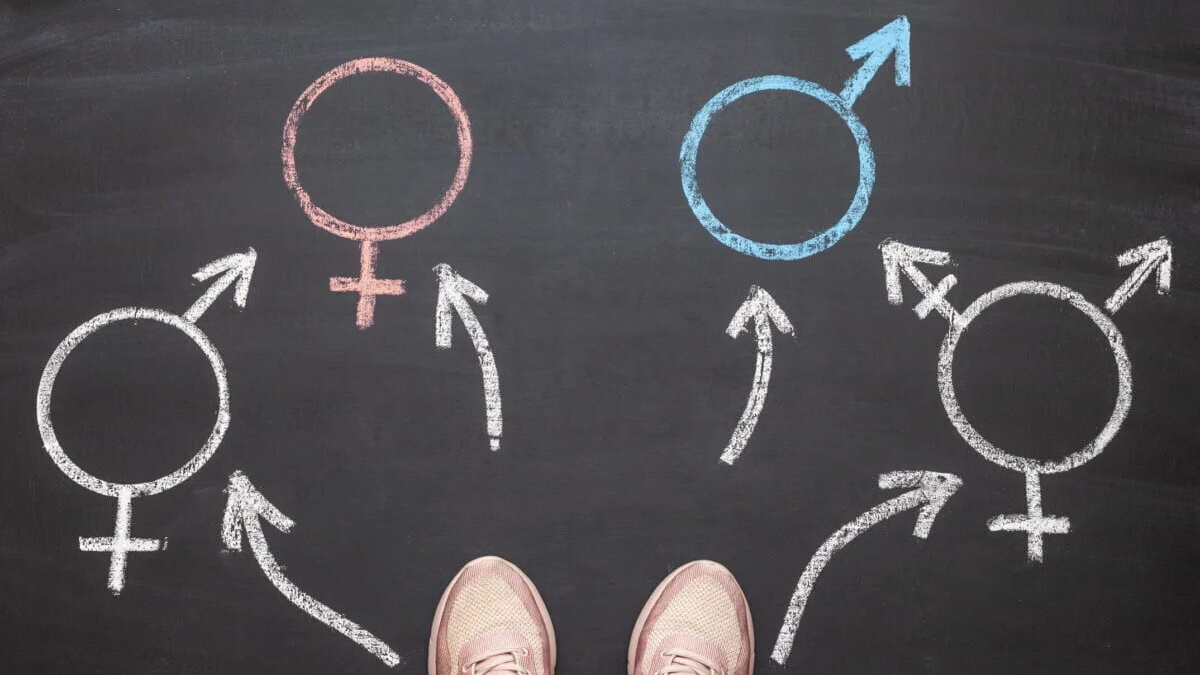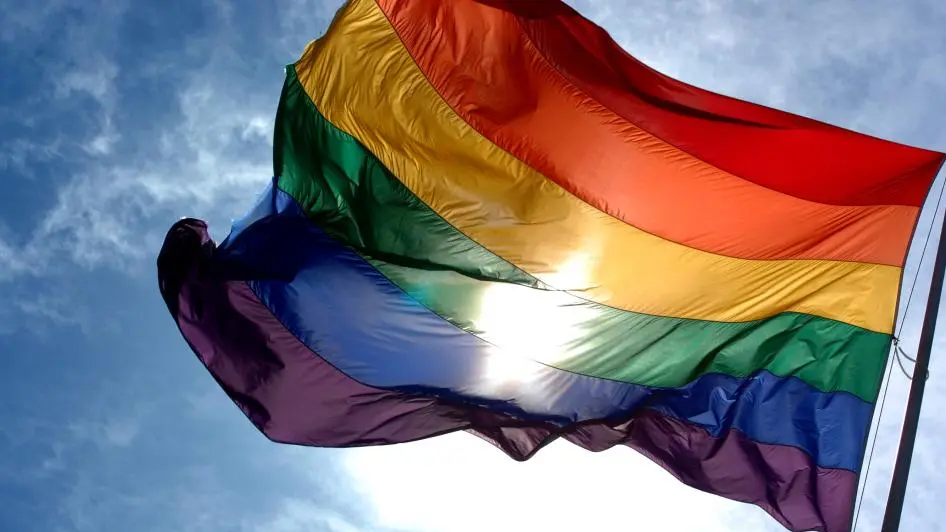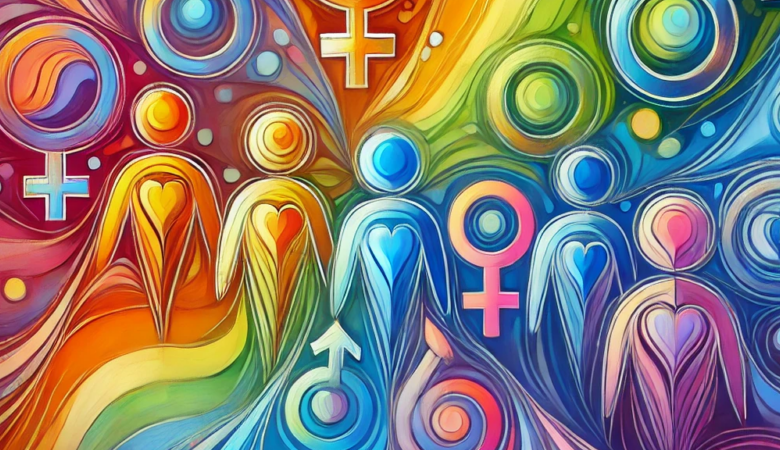What's In This Article?
Why Understanding Sexuality Matters
Let’s talk about something that’s part of every person’s life but still misunderstood by many—sexuality. If you’re looking for a clear sexuality definition, it’s about so much more than just attraction or physical relationships. At its core, sexuality is how we connect with others emotionally, romantically, and physically. It’s also a huge part of our identity and how we express ourselves in the world.
So, why is this important?
Understanding sexuality isn’t just about labels or definitions—it’s about respect and connection. Whether you’re learning about yourself or trying to understand someone else, having the right information helps us be more inclusive, compassionate, and informed. And that’s good for everyone.
This guide dives into the different ways people define and experience sexuality, how it’s evolved over time, and how culture, religion, and society all play a part. By the time you’re done reading, you’ll not only know more but feel more confident talking about it with others. Let’s break it down together, step by step.
What is Sexuality?

Sexuality is all about how people experience and express attraction. But it’s not just about who someone might like romantically or physically—it’s also tied to emotions, identity, and self-expression. A good sexuality definition includes emotional connections, physical feelings, and how people relate to their culture or personal values.
Sexuality is personal and can look different for everyone. Some people feel strong romantic or physical attraction to others, while others might not feel it at all—and both are completely normal. It’s also something that can evolve over time as people grow, learn, and explore their feelings.
Sexuality, Sexual, and Romantic: What’s the Difference?
- Sexuality: The broadest term, covering who you’re attracted to, how you express yourself, and how you connect emotionally and physically.
- Sexual Attraction: Specific to physical or sexual feelings. Not everyone experiences this, and that’s okay.
- Romantic Attraction: About emotional connections and feelings of love or affection. Romantic and sexual attraction don’t always overlap—for example, someone might feel romantically attracted but not sexually attracted, or vice versa.
Think of sexuality as a tapestry made of many threads, like sexual attraction, romantic feelings, and emotional connection. Each person’s tapestry is unique, with some threads playing a bigger role than others. And that’s perfectly okay.

A Living, Evolving Concept
As our understanding of sexuality grows and more people feel free to be themselves, new terms and ideas emerge. For example, terms like “graysexual” or “demisexual” are newer, but they describe feelings and experiences that have always existed. This guide is a snapshot of what we know now, but it’s important to recognize that our understanding might shift as society continues to learn and evolve.
Key Parts of Sexuality
- Sexual Orientation: Who you’re attracted to, whether it’s people of the same gender, a different gender, multiple genders, or none at all.
- Gender Identity and Expression: While not the same as sexuality, these often overlap. Gender identity is how you see yourself, and expression is how you show it to the world. These can influence how people experience their sexuality.
- Behaviors and Preferences: How someone expresses their sexuality. Some focus on physical attraction, while others value emotional or intellectual connections more.
Sexuality exists on a spectrum—it’s not black and white, and there’s no single “right” way to feel or express it. The more we understand this, the easier it is to accept and respect others for who they are.
The Evolution of Sexuality Through Time

Sexuality isn’t a new concept—it’s been part of human life forever. But the way we define and understand it has changed a lot throughout history. These shifts often reflect the society, culture, and beliefs of the time. Let’s take a journey through how sexuality has evolved and why it matters today.
Sexuality in Ancient Civilizations
In ancient times, sexuality was understood very differently:
- In ancient Greece, romantic and sexual bonds between men were not only accepted but woven into the culture. The writings of Plato, particularly in “Symposium,” discuss the value of love between men as a pathway to virtue and wisdom.
- Indigenous cultures around the world often viewed gender and sexuality as fluid. Many Native American tribes recognized Two-Spirit individuals who embodied both masculine and feminine qualities, a role often tied to spirituality and community leadership.
- In ancient Mesopotamia, texts like the “Epic of Gilgamesh” include references to deep emotional and potentially romantic bonds between men, showing that such connections were acknowledged and valued.
The Middle Ages and Renaissance: A Shift in Perspective
The understanding of sexuality became more rigid during this period:
- Organized Religion: Teachings from major religions often defined acceptable relationships, focusing on heterosexuality and procreation. For example, the writings of St. Augustine emphasized celibacy and procreative marriage as moral ideals.
- Taboos and Suppression: Non-heterosexual relationships and expressions of sexuality outside these norms were labeled sinful or taboo, leading to persecution in many societies.
- The Renaissance: Art and literature began to explore themes of love, beauty, and attraction in ways that defied societal expectations. Works like Shakespeare’s sonnets contain expressions of affection toward men, challenging the rigid norms of his time.
- Cultural shifts during this time laid the groundwork for later discussions about sexuality and identity.

Modern Perspectives on Sexuality
The 20th century brought major changes. The sexual revolution of the 1960s challenged traditional views and encouraged people to explore and express their sexuality openly.
- LGBTQ+ activism pushed boundaries, fighting for equal rights and recognition. Events like the Stonewall Riots of 1969 became pivotal moments in the fight for LGBTQ+ equality.
- Scientific advancements, like the Kinsey Reports, explored human sexuality in a nuanced way, breaking myths that had dominated for centuries. Kinsey’s research revealed the wide variety of sexual behaviors and orientations present in the population.
- Terms like “asexuality,” “pansexuality,” and “graysexuality” entered mainstream conversations, reflecting the growing recognition of diverse experiences.
Religion’s Role in the Evolution of Sexuality
Religion has always been a significant influence:
- Ancient Religious Texts: The Kama Sutra from ancient India, for example, offers insights into relationships, love, and sexual behavior, showing a more open view of sexuality in its cultural context.
- Modern Interpretations: Progressive movements within many religious communities now embrace and celebrate sexual diversity. While traditional views remain in some areas, growing dialogue focuses on acceptance and inclusion. For instance, organizations like DignityUSA work to create inclusive spaces for LGBTQ+ Catholics.
As society continues to evolve, so will our understanding of sexuality. New terms and identities will emerge, reflecting the diversity of human experience. Staying open-minded is key to building a more inclusive and compassionate future.
Comprehensive List of Sexual Orientations

Sexuality is as diverse as the people who experience it. For many, having specific terms to describe their experiences helps them feel understood and validated. Here’s a detailed list of different sexual orientations to give a better understanding of the spectrum:
- Heterosexuality: Attraction to people of a different gender.
- Homosexuality: Attraction to people of the same gender (includes gay and lesbian identities).
- Bisexuality: Attraction to two or more genders.
- Pansexuality: Attraction to individuals regardless of gender.
- Asexuality: Experiencing little or no sexual attraction to others.
- Demisexuality: Sexual attraction only after forming a strong emotional bond.
- Graysexuality: Experiencing sexual attraction rarely or only under specific circumstances.
- Polysexuality: Attraction to multiple genders but not all.
- Omnisexuality: Attraction to all genders, often with an awareness of gender differences.
- Skoliosexuality: Attraction to non-binary or genderqueer individuals.
- Androsexuality: Attraction to masculinity or male-identifying individuals.
- Gynosexuality: Attraction to femininity or female-identifying individuals.
- Lithsexuality: Experiencing attraction but not wanting it reciprocated or acted upon.
- Reciprosexuality: Attraction that develops only after knowing it is reciprocated.
- Sapiosexuality: Attraction to intelligence or intellectual connection.
- Fraysexuality: Attraction that fades as familiarity develops.
- Aegosexuality: Experiencing sexual attraction but not desiring participation in sexual acts.
- Cupiosexuality: Lack of sexual attraction but desiring a sexual relationship.
- Abrosexuality: A sexual orientation that changes over time or depending on circumstances.
- Placiosexuality: Enjoying giving sexual pleasure but having little to no desire to receive it.
- Quoisexuality: Inability or reluctance to label one’s sexual orientation.
This list reflects just some of the terms used to describe sexuality. It’s important to remember that these labels help some people feel seen and understood, but not everyone uses or needs a label to define themselves. It’s deeply personal, and there’s no “one way” to experience it.
Sexuality Definition: Myths & Misconceptions

Sexuality is complex, and with complexity often comes misunderstanding. Here, we’ll tackle some of the most common myths about sexuality and set the record straight:
Myth 1: Sexuality and Gender Are the Same Thing
Truth: Gender is about who you are (your identity), while sexuality is about who you’re attracted to. They’re connected but separate. For example:
- A transgender person can be straight, gay, bisexual, or any other orientation—just like cisgender people.
- While gender dysphoria is often linked with transgender people, cisgender individuals can also feel discomfort with societal expectations around gender.
Myth 2: Romantic Attraction Always Matches Sexual Attraction
Truth: Romantic and sexual attraction don’t always align. For example:
- Aromantic people might not feel romantic attraction at all.
- Demisexual individuals might only feel sexual attraction after forming a deep emotional bond.
- Romantic and sexual orientations exist on separate spectrums, and everyone’s experience is unique.
Myth 3: Asexuality Means Something Is Wrong with You
Truth: Asexuality is a natural and valid orientation. It’s not caused by trauma, medical conditions, or a lack of opportunity. Just as some people feel strong sexual attraction, others simply don’t.
- Asexual people can and often do form fulfilling romantic, platonic, or other meaningful relationships.
- Not wanting or experiencing sexual attraction doesn’t mean someone is “missing out” or incomplete.
Myth 4: Non-Binary and Gender-Queer People Don’t Have Defined Sexualities
Truth: Non-binary and gender-queer individuals experience the same diversity in attraction as anyone else. Their sexual and romantic orientations can be just as clear or nuanced as cisgender individuals. Just because someone’s gender isn’t binary doesn’t mean their experiences are undefined.
Myth 5: People Who Don’t Date or Have Sex Are “Missing Out”
Truth: Not everyone prioritizes romantic or sexual relationships. Asexual and aromantic individuals lead rich, meaningful lives full of deep connections, personal fulfillment, and growth. Society tends to prioritize romantic and sexual bonds, but many people find purpose and happiness outside of those norms.
Myth 6: Romantic and Gender Nuances Overcomplicate Things
Truth: Labels like aromantic, gray-romantic, and demiromantic help people describe their specific experiences. These aren’t about complicating life—they’re about giving people language to express themselves and feel understood.
- Relationship styles like polyamory and non-monogamy are about preferences, not sexual orientations, and they can work for people of all identities.
Myth 7: LGBTQ+ Identities Are a Modern Trend
Truth: Sexual and gender diversity has existed for centuries across cultures. Examples include:
- Hijra communities in South Asia.
- Two-Spirit people in Native American cultures.
- Māhū individuals in Hawaiian traditions.
- These identities are not a product of modern influence or Western culture.
Myth 8: You Can Tell Someone’s Sexuality or Gender by Looking at Them
Truth: There’s no way to “look” at someone and know their sexuality or gender identity. Making assumptions based on appearance enforces stereotypes and often leads to misunderstanding or harm.
Myth 9: Polyamory or Non-Monogamy Is the Same as Being Pansexual
Truth: Polyamory and non-monogamy describe relationship preferences, not orientations.
- Being pansexual means being attracted to people regardless of gender.
- Polyamory focuses on meaningful relationships with more than one person, regardless of orientation.
Myth 10: LGBTQ+ Identities Are “Confusing” for Children
Truth: Kids are often more open-minded and adaptable than adults. Teaching them about diverse identities fosters acceptance and empathy. Learning about LGBTQ+ experiences helps children understand themselves and others better without confusion or harm.
Sexuality Definition: Closing

Sexuality is such a massive topic—it’s no wonder people dedicate entire academic careers to studying it. There’s no way to cover every detail or perspective in a single article. But we’ve done our best to hit the major points and give you a clear sexuality definition, along with some key ideas to think about.
We’ve touched on how sexuality has evolved over time, the different ways people experience it, and even busted some common myths. Still, there’s so much more to explore. Every person’s experience is unique, and our understanding of sexuality continues to grow as society becomes more open and inclusive.
If you’re curious about this topic, keep learning! Whether it’s through reading, listening to others, or reflecting on your own feelings, understanding sexuality helps us all connect in a more meaningful way. At the end of the day, it’s about respecting people for who they are—and that’s something we can all work toward.
Exploring Connection and Pleasure
If you’re looking for ways to explore connection and pleasure, Lovense offers inclusive options designed for everyone, no matter how you define yourself or your relationships.
Want More Educational Articles?
- Autosexual Insights: Identity, Myths, and Empowerment
- Statistics and Trends In New Year’s Sex & Sexual Wellness
- Keep the Spark Alive: Top Long-Distance Sex Toys for Gay Couples
- Lesbian Literature – 10 Books You Should Look At


